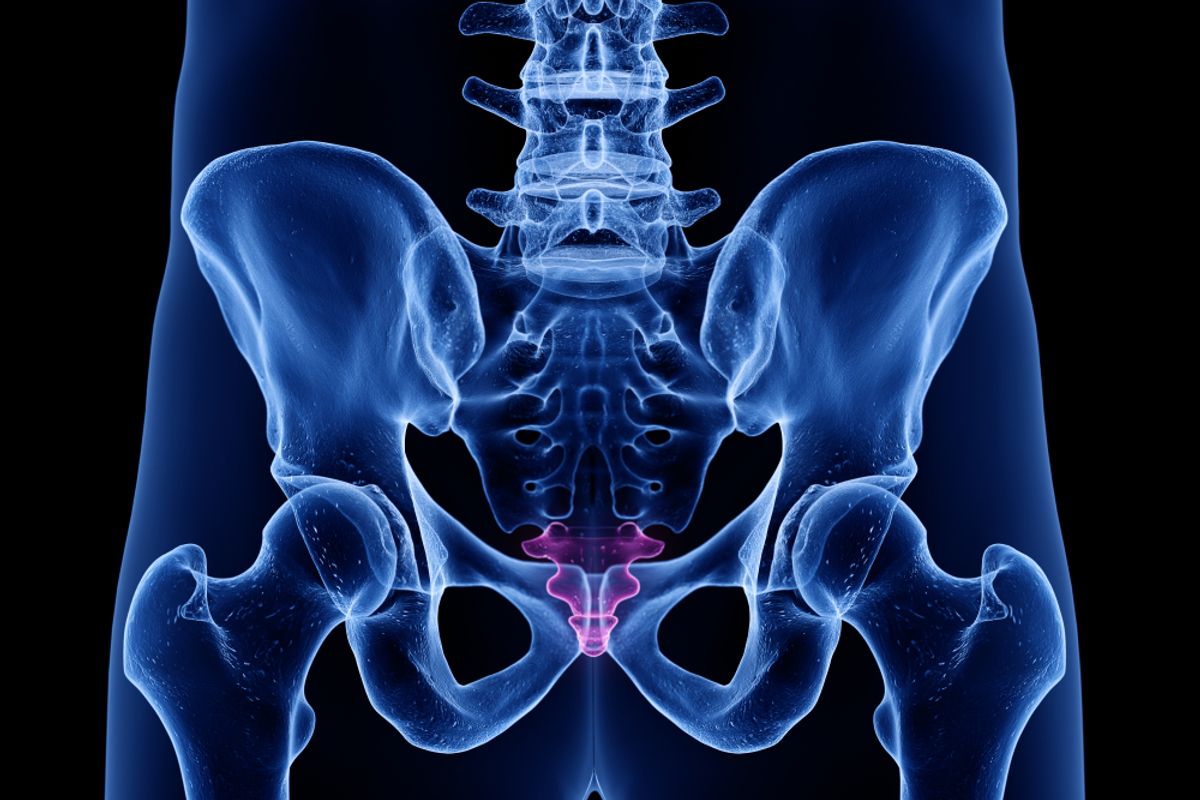Key Takeaways on the Human Tailbone
- The human tailbone, also known as the coccyx, is a vestigial feature, meaning it has lost its original function in the body over the course of evolution.
- The human tailbone is a leftover feature from an ancient ancestor that had a tail. Other primates, like chimpanzees and bonobos, also have tail bones but no tails.
- Though it’s small, a human tailbone injury can be extremely painful and can take a while to heal. Most tailbone injuries occur from falls.
Although whales don’t walk, they still have hip bones. Ostriches don’t fly, yet they have wings. Blind cusk eels, seen in the extremely deep waters of the Central Pacific where no sunlight reaches, have nonfunctional eyes beneath their skin. These are all examples of vestigial features, anatomical structures that have lost their original function throughout the course of evolution.
Just like the whale shark, which has rows of teeth too dull to bite, humans also have an ancient remnant of those who walked before them: the tailbone.
Also known as the coccyx, the tailbone is about the size of a quarter, measuring between 1 and 4 inches. This small, triangular-shaped bone is located directly below the sacrum, the last bone of the spine, in the posterior part of the pelvis between the buttocks. Several fused vertebrae are remnants of the tail humans once possessed during embryonic development.
Read More: Humans Don’t Walk Around With Tails Likely Because of This Genetic Mutation
What Was the Human Tailbone For?
While the tailbone is no longer functional in humans, it serves as an attachment point for muscles and ligaments that support the pelvic floor and control bowel movements.
“The human tailbone is a leftover vestige from a distant human ancestor who had a tail. Humans, like the rest of the great apes (gorillas, orangutans, chimpanzees, and bonobos), lack a tail but have retained some of the bones that would have comprised the tail in a shared ancestor,” Crystal Koenig, an assistant professor of anthropology at Southern Utah University, says.
“While the coccyx is a fairly small structure, it retains some important functions, including serving as an attachment site for some of the muscles of the pelvis and helping to provide support and balance when seated,” Koenig continues.
What Happens If The Tailbone Is Damaged?
Although humans no longer need the tailbone to survive, it remains an integral part of the skeletal system and provides additional support for the body. Because the tailbone connects to the pelvic floor muscles and ligaments, it also helps support the bladder, rectum, and uterus.
These ligaments, tendons, and muscles that attach to the tailbone also make any injury to the bone extremely painful. Just a bruise can take up to a month to heal, while a fracture may take up to three months, according to the Mount Sinai Hospital in New York City.
“Damage to the tailbone can be[…] kind of a pain in the butt,” says Koenig. “But seriously, the coccyx is most often fractured due to a direct impact, something like a fall. Coccyx fractures are unpleasant and can cause pain, especially when seated. That pain can be exacerbated with strain, for example, during bowel movements. Sometimes sitting on a doughnut-shaped pillow can alleviate pain.”
A Tail Connected to the Human Tailbone
Most humans grow a tail during fetal development, typically between the fourth and eighth weeks of gestation. At this time, the embryonic tail regresses and is absorbed by the body. But in some cases, a baby may be born with their tailbone still intact.
In 2023, doctors described in the Journal of Pediatric Surgery Case Reports an infant male who was born with “a tall skin appendage at his lower back.” Medical imaging showed that the baby’s “non-canalized structure” extended from the lower end of the sacrum, made up of fatty and connective tissue, muscle, blood vessels, and nerves. As a vestigial structure, however, it did not contain cartilage or bone.
“The Pseudo-human tail category agrees with the illustrated case in this article, a vestigial structure, tubular in shape, [with] no bony or cartilaginous component, no reflex movement, and no continuation with the spinal canal,” concluded the researchers.
Read More: 5 Vestigial Body Parts Found in Humans
Article Sources
Our writers at Discovermagazine.com use peer-reviewed studies and high-quality sources for our articles, and our editors review for scientific accuracy and editorial standards. Review the sources used below for this article:

